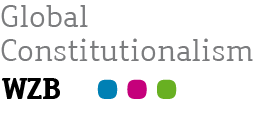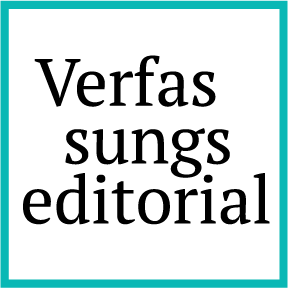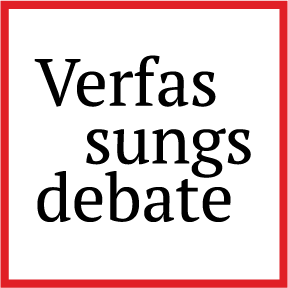America’s First Religious Public School?
On June 5, 2023, the Oklahoma Statewide Virtual Charter School Board narrowly approved the application for St. Isidore of Seville Catholic Charter School, the first religious charter school in the United States. This development came at a time when charter schools have become a significant part of the American education system, enrolling over 3.7 million students nationwide—more than double the number from a decade ago. Private religious schools, meanwhile, have witnessed significant declines in enrollment. Catholic schools, in particular, have seen their numbers plummet—from over 13,000 schools in the 1960s to around 5,000 today—prompting some to rebrand as charter schools and seek public funding as a lifeline, while dropping their explicit religious instruction.
St. Isidore’s application, however, did not obscure its religious character: Catholic teachings, liturgical celebrations, and moral instruction were explicitly described as core elements of the school’s daily curriculum. The Board’s approval sparked immediate controversy. Oklahoma Attorney General Gentner Drummond, a Republican, condemned the approval, warning: “The day will turn where we’re gonna get applicants from … a satanic organization that says, ‘We want state funding so that we can teach the attributes of Satan.’” He proceeded to file suit, and in the summer of 2024, the Oklahoma Supreme Court ruled that the Board’s approval violated both the Federal Establishment Clause and Oklahoma’s constitutional prohibition on public funding for sectarian institutions. But the legal battle is far from over. Aggrieved by the decision, the petitioners filed a writ of certiorari with the United States Supreme Court, which granted their request on 24 January 2025. The Court’s eventual decision in the case has the potential to fundamentally reshape how we think about the place of religion in the nation’s public life.
How could this have come to pass? Isn’t the very premise of public schooling its commitment to religious neutrality? Wouldn’t a publicly funded religious school constitute a textbook case of government establishment of religion? These questions, despite their urgency, miss something important about the rise of religious charter schools. This case is not merely about school choice or religious freedom, but rather reflects the culmination of what I call in a forthcoming article, “private disestablishment”— a legal phenomenon where entities that operate at the blurred boundary between public and private recast themselves as entirely private actors while performing public functions. By doing so, they secure public benefits—such as funding and regulatory advantages—without bearing the constitutional obligations, such as anti-discrimination mandates or religious neutrality, that typically constrain public institutions.
I argue that private disestablishment seeks to leverage the hybrid nature of charter schools to secure public funding for religious institutions while avoiding the constitutional obligations typically imposed on public entities. This strategy draws from two strands of constitutional doctrine: the Supreme Court’s expansion of Free Exercise Clause protections, which increasingly frames the exclusion of religious institutions from generally available public benefits as discrimination, and the state action doctrine, which governs when a private actor’s conduct can be fairly attributed to the government. While these strands are often treated as separate legal questions, examining them in isolation obscures deeper questions about the relationship between markets, the state, and society—particularly regarding the role of religion in public life.
The Free Exercise strand casts religious institutions as private actors seeking equal participation in a public marketplace, while the state action doctrine determines when private conduct becomes public responsibility. Religious charter schools thrive in the gaps between these two frameworks, using their hybrid status to claim public funding while maintaining autonomy from constitutional scrutiny. By refocusing our analysis on private disestablishment as a legal phenomenon, we can better understand how these doctrines intersect to reconfigure the boundaries between public and private authority in education, and how the fight over this issue represents a broader contest about how economic and social life is organized through legal structures that mediate public responsibility and private authority.
Are charter schools public or private?
At the heart of the St. Isidore legal dispute lies a deceptively simple question: are charter schools public or private? Charter school proponents like St. Isidore claim that they are private entities contracting with the state to provide educational services, much like any private school participating in a school voucher program. By this logic, excluding religious charter schools from public funding violates the Supreme Court’s Free Exercise jurisprudence, which prohibits religious discrimination in access to public benefits. But opponents, including the National Alliance for Public Charter Schools, the nation’s largest charter school advocacy organization, maintain that charter schools are public schools by design. Charter schools, they argue, must adhere to constitutional constraints that prevent state endorsement of religion.
The legal framework used to address this question is the state action doctrine, which governs when private conduct can be deemed state action for constitutional purposes. Courts have struggled to apply the doctrine in a consistent manner to charter schools. In 2010, the Ninth Circuit held in Caviness that a charter school’s employment decisions did not constitute state action. Conversely, in 2022, the Fourth Circuit held in Peltier that a charter school’s imposition of a gender-stereotypical dress code was state action and therefore subject to Title IX.
St. Isidore’s legal strategy asserts its private status and reframes its exclusion from public funding as unconstitutional religious discrimination. However, this argument misses a crucial point: charter schools disrupt the very public/private framework on which the state action doctrine rests. They are hybrid institutions, simultaneously public and private in different respects. To understand why religious charter schools present such a profound challenge to constitutional law, we need to appreciate three dimensions that illustrate this hybrid nature: their disruptive origins, the variation in state regulatory regimes that govern them, and their fragmented governance structure.
Charter schools as structural disruptors
Charter schools were born out of the 1980s push for education reform, which sought to introduce flexibility and innovation into a public school system widely perceived as failing. Unlike traditional public schools, charter schools were designed to be free from many government regulations in exchange for accountability: they had to meet performance goals or risk having their charters revoked. Over time, however, charter schools became fully integrated into state public education systems. They receive public funding based on per-pupil allocations and are often included as line items in state budgets. When facing legal challenges under state “no-aid” provisions—constitutional clauses that prohibit public funding of religious institutions—charter schools have argued that they are public schools and, therefore, exempt from these restrictions.
This dual identity—publicly funded but designed to be more autonomous—has led to strategic inconsistencies in how charter schools position themselves legally. When sued for constitutional violations of student and teacher rights, many charter schools have argued that they are private entities exempt from constitutional scrutiny. For example, charter schools have claimed that they are not subject to due process requirements when disciplining students, even though these protections apply to students in traditional public schools. This inconsistency has real-world consequences: studies have shown that Black and brown students are disproportionately subjected to harsher disciplinary practices in charter schools. Similarly, many charter schools are able to hire teachers who are not subject to state certification requirements, though these teachers often lack the protections of collective bargaining agreements due to low union density and the frequent use of anti-union tactics. This combination of lower certification standards and diminished labor protections has raised concerns about teacher qualifications and job security compared to their counterparts in traditional public schools.
Religious charter schools amplify these tensions. The Supreme Court’s recent Free Exercise decisions—Trinity Lutheran, Espinoza, and Carson—were predicated on the idea that excluding religious institutions from public benefits constitutes unconstitutional status-based discrimination. But these cases involved private religious schools participating in voucher or grant programs, where parental choice served as a constitutional buffer between government and religion. Religious charter schools, by contrast, operate entirely within the public education system and receive state funding directly. This distinction undermines the analogy to private school voucher programs. Instead, religious charter schools force courts to confront the blurred boundaries between public and private roles in education.
Regulatory federalism and state control
The regulation of charter schools varies significantly across states, reflecting the decentralized nature of public education in the United States. Some states, like Arizona, grant charter schools near-total autonomy, while others, like Massachusetts, impose stricter oversight. These differences highlight the local democratic character of public education and complicate efforts to classify charter schools as uniformly public or private.
State constitutional commitments also shape the regulatory landscape. Courts in Colorado, California, and Ohio have assessed whether charter schools violate mandates for “uniform” or “efficient” public school systems. They have generally upheld the validity of charter schools as part of the public education system, reasoning that they provide statewide educational opportunities, adhere to state standards on curricula, teacher qualifications, and assessments, and meet accountability requirements such as state-mandated testing and adequate facilities. The same logic applies to state restrictions on public funding for religious institutions, which often include explicit prohibitions against religious instruction in publicly funded schools. Courts in these states are likely to view religious charter schools as incompatible with their constitutional commitments, arguing that public funding of sectarian instruction risks entanglement between church and state.
This diversity complicates the Supreme Court’s task. A broad ruling in the St. Isidore case stating that religious charter schools are private could undermine states’ ability to regulate their education systems according to local needs and constitutional traditions. It could also erode the principle of shared sovereignty that underpins federalism in education law.
Charter school organization
Charter schools do not have a monolithic operational structure, and the role of religious institutions in managing them adds further complexity. Charter schools are a “they” not an “it.” Courts, consequently, must distinguish between the different components that make up a charter school’s governance: the charter school itself, the entity that holds the charter (usually a nonprofit), and the charter management organization (CMO) or education management organization (EMO) responsible for day-to-day operations. Each plays a distinct role, yet this fragmentation creates ambiguity about who is ultimately accountable when constitutional violations arise.
For example, in Pocono Mountain Charter School, a Pennsylvania court scrutinized a charter school managed by a religious organization and highlighted the entanglement risks posed when CMOs pursue sectarian missions. The court emphasized that, as recipients of public funds, charter schools must adhere to nonsectarian requirements, regardless of the religious affiliations of their managing organizations. This approach mirrored that of the Fourth Circuit in Peltier when it ruled that the school—a public charter—was a state actor and, therefore, subject to constitutional anti-discrimination rules. However, the court distinguished the school’s EMO, The Roger Bacon Academy, holding that it was not a state actor despite its role in running the school.
This separation of roles raises profound legal challenges in the context of religious charter schools. If a religious institution holds a charter but contracts with a CMO or EMO that enforces discriminatory practices—such as restricting admissions based on religious criteria or firing LGBTQ+ teachers—courts must decide whether the constitutional violation stems from the public charter school or from the private management organization. The answer determines whether anti-discrimination and Establishment Clause principles apply. And without clear lines of accountability, religious charter schools may evade constitutional scrutiny by shifting responsibility between entities, reinforcing a system where private organizations benefit from public funding while avoiding public obligations.
***
Given charter schools’ complex and hybrid nature, religious charters like St. Isidore are well-situated to pursue a strategy of ‘private disestablishment’— allowing religious institutions to secure public funding while evading constitutional obligations. The emergence of religious charter schools signals a broader reimagining of public education, one that aligns with market-based narratives of school choice and could gain further momentum under President-elect Trump’s agenda to expand privatized educational models.
But the legal battle over St. Isidore is about more than just school choice or religious autonomy—it reflects a broader contest over how law structures public responsibility and private power. The Supreme Court’s eventual decision will shape not only the future of religious charter schools but also the broader constitutional boundaries of public education. The Court could reinforce public accountability and the secular nature of public services, or it could set a precedent that legitimizes further privatization of core public functions in the name of religious freedom.
This post originally appeared on the Law & Political Economy Blog.



